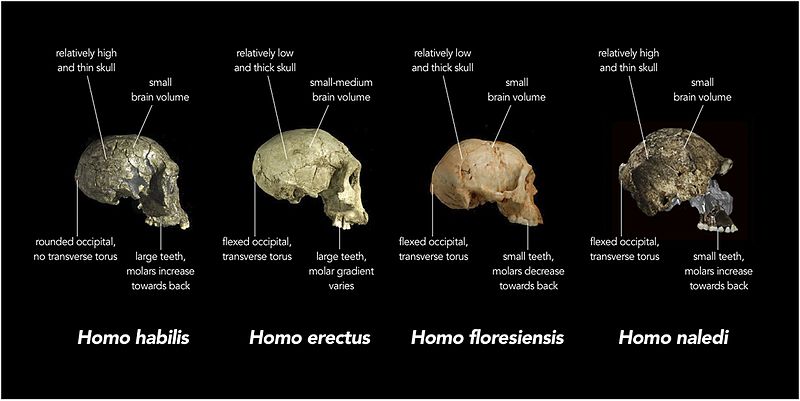Plik:Comparison of skull features of Homo naledi and other early human species.jpg

Rozmiar podglądu – 800 × 401 pikseli. Inne rozdzielczości: 320 × 160 pikseli | 640 × 321 pikseli | 1024 × 513 pikseli | 1280 × 641 pikseli | 2560 × 1283 pikseli | 4473 × 2241 pikseli.
Rozmiar pierwotny (4473 × 2241 pikseli, rozmiar pliku: 382 KB, typ MIME: image/jpeg)
Historia pliku
Kliknij na datę/czas, aby zobaczyć, jak plik wyglądał w tym czasie.
| Data i czas | Miniatura | Wymiary | Użytkownik | Opis | |
|---|---|---|---|---|---|
| aktualny | 02:58, 12 wrz 2015 |  | 4473 × 2241 (382 KB) | Animalparty | User created page with UploadWizard |
Lokalne wykorzystanie pliku
Poniższa strona korzysta z tego pliku:
Globalne wykorzystanie pliku
Ten plik jest wykorzystywany także w innych projektach wiki:
- Wykorzystanie na arz.wikipedia.org
- Wykorzystanie na ast.wikipedia.org
- Wykorzystanie na az.wikipedia.org
- Wykorzystanie na bg.wikipedia.org
- Wykorzystanie na ca.wikipedia.org
- Wykorzystanie na ceb.wikipedia.org
- Wykorzystanie na de.wikipedia.org
- Wykorzystanie na en.wikipedia.org
- Wykorzystanie na es.wikipedia.org
- Wykorzystanie na eu.wikipedia.org
- Wykorzystanie na fr.wikipedia.org
- Wykorzystanie na ga.wikipedia.org
- Wykorzystanie na he.wikipedia.org
- Wykorzystanie na hr.wikipedia.org
- Wykorzystanie na ia.wikipedia.org
- Wykorzystanie na id.wikipedia.org
- Wykorzystanie na ja.wikipedia.org
- Wykorzystanie na kab.wikipedia.org
- Wykorzystanie na ka.wikipedia.org
- Wykorzystanie na kn.wikipedia.org
- Wykorzystanie na nl.wikipedia.org
- Wykorzystanie na nn.wikipedia.org
- Wykorzystanie na no.wikipedia.org
- Wykorzystanie na oc.wikipedia.org
- Wykorzystanie na pt.wikipedia.org
- Wykorzystanie na ro.wikipedia.org
- Wykorzystanie na simple.wikipedia.org
- Wykorzystanie na species.wikimedia.org
- Wykorzystanie na sv.wikipedia.org
- Wykorzystanie na tr.wikipedia.org
- Wykorzystanie na uk.wikipedia.org
- Wykorzystanie na ur.wikipedia.org
- Wykorzystanie na vi.wikipedia.org
- Wykorzystanie na vls.wikipedia.org
- Wykorzystanie na www.wikidata.org

